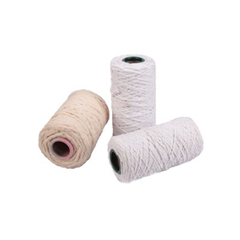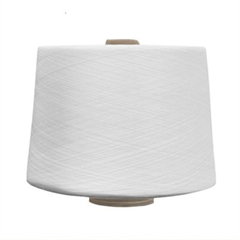Jute yarn’s strength lies in its natural simplicity, making it a valuable and versatile material with a wide range of applications. Here’s a closer look at how the combination of strength and natural simplicity makes jute yarn stand out:
- Natural Strength: Jute fibers are inherently strong and durable, contributing to their usefulness in various industries. The natural strength of jute yarn allows it to withstand tension, making it suitable for tasks like bundling, tying, and securing.
- Biodegradability: Despite its strength, jute yarn is entirely biodegradable. It decomposes naturally over time, eliminating concerns about long-term environmental impact, unlike synthetic materials that can persist in the environment for years.
- Low Environmental Impact: Jute cultivation requires fewer pesticides, synthetic fertilizers, and water compared to other fiber crops, reducing its environmental footprint. Its minimal chemical usage also contributes to soil and water quality preservation.
- Versatility: Jute yarn’s simplicity is matched by its versatility. It can be used in various applications, from fashion and home decor to packaging and construction. Its natural color and texture add a rustic and authentic charm to products.
- Eco-Friendly Appearance: The natural appearance of jute yarn, with its earthy color and textured surface, aligns with eco-friendly and sustainable aesthetics. It provides a visual connection to nature, making it appealing to environmentally conscious consumers.
- Sustainable Sourcing: Jute is a rapidly renewable resource, with a short growth cycle of 4-6 months. This rapid regrowth makes jute a sustainable choice, supporting the idea of responsible and renewable material sourcing.
- Strength in Simplicity: Jute yarn’s simplicity in terms of texture and appearance can be a design advantage. It complements various materials and styles, making it a versatile element in creative projects.
- Cultural Significance: Jute has cultural and historical significance in regions where it is cultivated, further adding to its appeal and recognition as a valuable natural resource.
- Carbon Sequestration: Jute plants absorb significant amounts of carbon dioxide (CO2) during their growth, contributing to carbon sequestration, which is crucial for mitigating climate change.
- Support for Local Communities: Jute cultivation and processing provide employment opportunities in rural areas, supporting the livelihoods of many communities, particularly in developing countries.
In summary, jute yarn’s strength in natural simplicity is a testament to its utility and appeal in various industries. Its combination of strength, sustainability, and eco-friendliness makes it an attractive choice for environmentally conscious consumers, designers, and businesses seeking to incorporate sustainable and responsible materials into their products and projects.
























